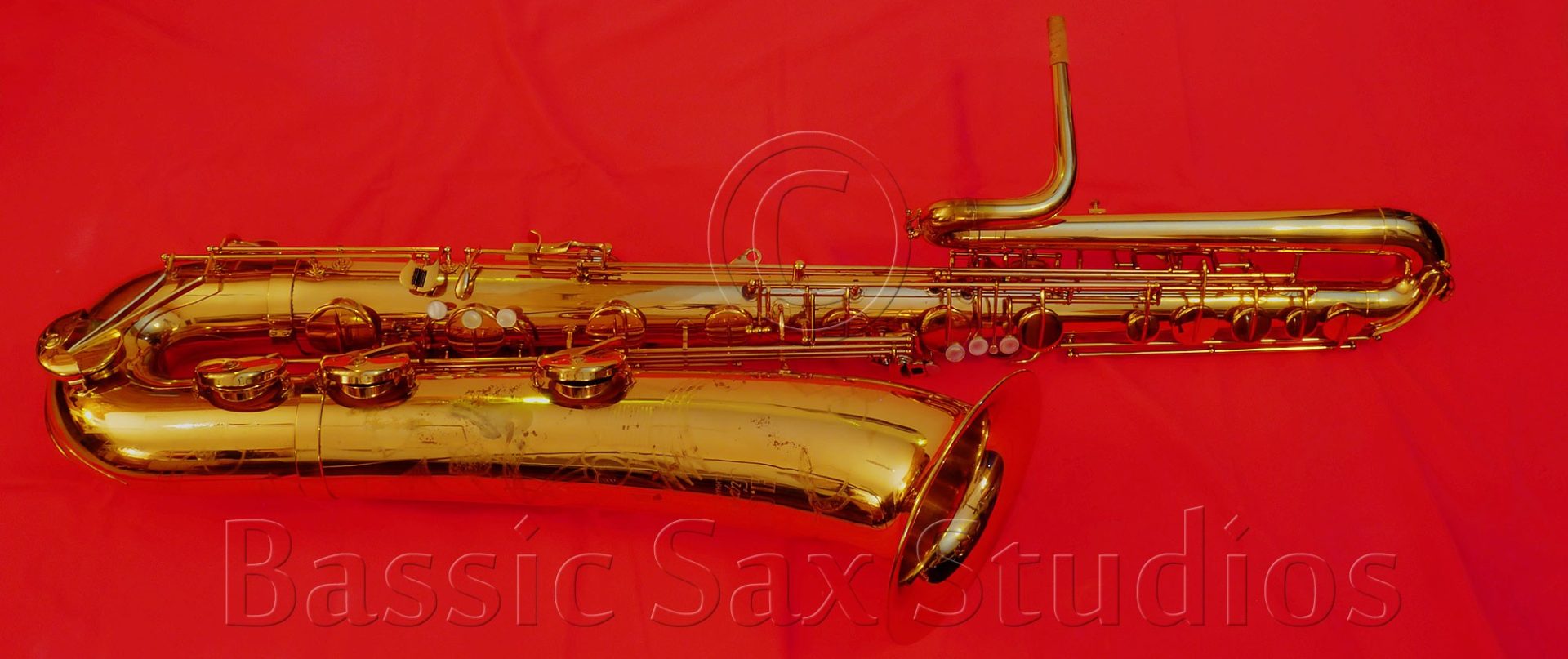
Company History
As had become the norm in Eastern Bloc countries, the VEB Sächsische Musikinstrumentenfabrik was established in 1946 by the expropriation of a private firm—in this case, the Ernst Hess Nachf company.
Under the VEB Sächsische Musikinstrumentenfabrik name, the VEB—meaning Volkseigener Betrieb, see below for English definition—produced musical instruments between 1946 – 1952. The saxophones built by the Sächsische Musikinstrumentenfabrik were sold under the name Akustik.
On January 1, 1953, the Sächsische Musikinstrumentenfabrik merged with the Signal-Instrumenten-Fabrik Markneukirchen, and the Vogtländische Etuifabrik Adorf. The merger of these 3 VEBs created the VEB Blechblas- und Signal-Instrumentenfabrik, more commonly known as B&S.
Getting back to Akustik…
Originally the Sächsische Musikinstrumentenfabrik produced only alto saxophones. Then in 1950, they began manufacturing tenors as well. Until the VEB’s merger to form B&S in January 1953, approximately 2000 altos and 2500 tenors were made. After the creation of VEB Blechblas- und Signal-Instrumentenfabrik, Akustik production continued until the beginning of the 1960s. The brand was then replaced by Weltklang.
Akustik saxophone features
The Akustik brand had a few features that were rather unique:
1. The first, and most obvious, were the coloured glass or plastic, rather than mother of pearl, key touches that many saxophones had.

However, not all Akustik saxophones had these coloured key touches on all their keys. On some saxophones these coloured glass or plastic pieces were interspersed with white ones…

… while on other horns almost all the key touches were white.

Regardless what the key touch colours were on the rest of horn, on all the Akustik saxophones that I have seen to date, the left pinkie cluster had coloured touches and rollers.

Some of the horns—presumably the company’s deluxe models—were decked out in “full pearls”, or in this case, full glass/plastic. To date I have only seen blue, orange, and red key touches on Akustik saxophones.

2. The second thing that is rather unique about Akustik saxophones, is the shape of their left pinkie clusters. More on that immediately below.
The Akustik evolution into Weltklang
Looking at the Akustik instruments made by VEB Sächsische Musikinstrumentenfabrik Klingenthal, you can see the similarities to their early Weltklang successors.
The left pinkie cluster is shaped very much like that of the early Weltklangs.

So too is the low C mechanism.

Interestingly enough, early Weltklang altos and tenors often sported the coloured glass key touches that the Akustiks had. Presumably B&S was using up old stock. For example, here is Weltklang tenor # 3975 that sports those orange glass key touches its predecessor was well known for.

It also has the same left pinkie cluster previously seen in Akustik saxophones.

If you are interested in seeing more photos of Akustik saxophones, be sure to check out the company’s gallery on Bassic Sax Pix. New images are added regularly, so if it’s been a while since you’ve checked the gallery, it might be worth your while to see if there’s something new that you’ve not seen before.
________________________________________________________________________________________________________________
Sources:
Dr. Enrico Weller commenting on the Forum des Musikinstrumentenmuseums Markneukirchen.
Uwe Ladwig, in der deutschen Fachzeitschrift—German music journal—SONIC sax & brass.
I would like to thank Uwe for so generously allowing me to use his research, and very much appreciate the trust he has shown by allowing me to do my own translation.
________________________________________________________________________________________________________________
Volkseigener Betrieb (VEB) was the legal form of an industrial enterprise in East Germany. They were publicly owned and were routinely combined with other organizational units called Kombinate. The English term for a VEB would be people-owned enterprise, or literally, National Corporation.
Source: The Free Dictionary












You must be logged in to post a comment.